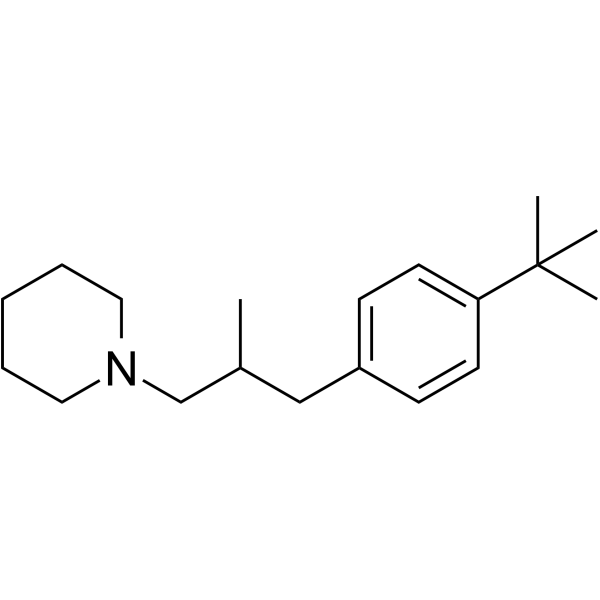
Fenpropidin
CAS No. 67306-00-7
Fenpropidin( —— )
Catalog No. M27311 CAS No. 67306-00-7
Fenpropidin, a fungicide, is a specific inhibitor of sterol 14-reductase and biosynthesis.
Purity : >98% (HPLC)
 COA
COA
 Datasheet
Datasheet
 HNMR
HNMR
 HPLC
HPLC
 MSDS
MSDS
 Handing Instructions
Handing Instructions
| Size | Price / USD | Stock | Quantity |
| 5MG | 35 | In Stock |


|
| 10MG | 53 | In Stock |


|
| 25MG | 79 | In Stock |


|
| 50MG | 95 | In Stock |


|
| 100MG | 143 | In Stock |


|
| 200MG | 213 | In Stock |


|
| 500MG | Get Quote | In Stock |


|
| 1G | Get Quote | In Stock |


|
Biological Information
-
Product NameFenpropidin
-
NoteResearch use only, not for human use.
-
Brief DescriptionFenpropidin, a fungicide, is a specific inhibitor of sterol 14-reductase and biosynthesis.
-
DescriptionFenpropidin, a fungicide, is a specific inhibitor of sterol 14-reductase and biosynthesis.
-
In Vitro——
-
In Vivo——
-
Synonyms——
-
PathwayGPCR/G Protein
-
TargetAntibacterial
-
Recptor——
-
Research Area——
-
Indication——
Chemical Information
-
CAS Number67306-00-7
-
Formula Weight273.464
-
Molecular FormulaC19H31N
-
Purity>98% (HPLC)
-
SolubilityIn Vitro:?DMSO : 100 mg/mL (365.68 mM)
-
SMILESCC(CN1CCCCC1)Cc1ccc(cc1)C(C)(C)C
-
Chemical Name——
Shipping & Storage Information
-
Storage(-20℃)
-
ShippingWith Ice Pack
-
Stability≥ 2 years
Reference
1.Matthew B Wright, et al. Compounds targeting OSBPL7 increase ABCA1-dependent cholesterol efflux preserving kidney function in two models of kidney disease. Nat Commun. 2021 Aug 2;12(1):4662.
molnova catalog



related products
-
Macozinone
Macozinone (PBTZ-169, PBTZ169)?is a potent, second-generation antituberculosis agent that inhibits DprE1 and displays nanomolar bactericidal activity against Mycobacterium tuberculosis in vitro.
-
PGLa
PGLa is a cationic antimicrobial peptide (AMP) originally isolated from frog. It has been shown to have antibacterial,antifungal,and antiviral,activities.
-
Cephapirin Sodium
Cefapirin sodium is the sodium salt of Cephapirin an antimicrobial agent.



 Cart
Cart
 sales@molnova.com
sales@molnova.com


